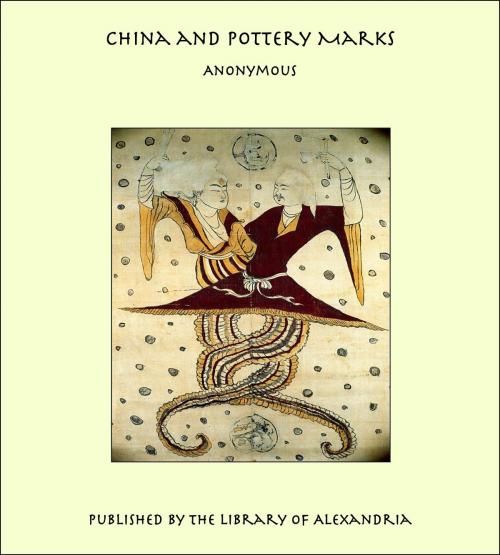| Author: | Anonymous | ISBN: | 9781465542847 |
| Publisher: | Library of Alexandria | Publication: | March 8, 2015 |
| Imprint: | Language: | English |
| Author: | Anonymous |
| ISBN: | 9781465542847 |
| Publisher: | Library of Alexandria |
| Publication: | March 8, 2015 |
| Imprint: | |
| Language: | English |
Traditions and Old China From early days when the ancients showed their appreciation of fine pottery and old glassware by burying “these most esteemed possessions” with the dead, fine china has been synonymous with culture and breeding. With our ancestors for generations we share the tradition that, just as first editions give prestige to one’s book shelves, old china or the finest work of the modern kilns express readily that good taste and discrimination that is characteristic of our old families. A wealth of association and historic data is to be acquired from the study of the “fabrique marks” and periods of the master craftsmen. If in America there was a general tendency toward acquiring, even a smattering, of this knowledge, there would be less of these drawing-room atrocities which Arthur Hayden in his “Chats on English Earthenware” points out, “To have a modern set of vases adorning a Georgian cabinet is like putting new wine in old bottles.” For the convenience of the seasoned collector, as well as the beginner, in this book is a representative list of better known marks by which china can be identified. While it is not possible to include a complete list, particularly those of extremely rare specimens, those compiled have particular reference to the marks of English china which is greatly in demand by collectors. These will suffice to enable the reader to identify pieces whenever encountered. The signatures or mark which the master craftsmen in earth or clay signed their products, just as a painter signs his work, were often specially designed devices of various kinds, often a combination of initials and dates. Each “fabrique mark” stands for a certain potter’s art just as the modern trade-mark
Traditions and Old China From early days when the ancients showed their appreciation of fine pottery and old glassware by burying “these most esteemed possessions” with the dead, fine china has been synonymous with culture and breeding. With our ancestors for generations we share the tradition that, just as first editions give prestige to one’s book shelves, old china or the finest work of the modern kilns express readily that good taste and discrimination that is characteristic of our old families. A wealth of association and historic data is to be acquired from the study of the “fabrique marks” and periods of the master craftsmen. If in America there was a general tendency toward acquiring, even a smattering, of this knowledge, there would be less of these drawing-room atrocities which Arthur Hayden in his “Chats on English Earthenware” points out, “To have a modern set of vases adorning a Georgian cabinet is like putting new wine in old bottles.” For the convenience of the seasoned collector, as well as the beginner, in this book is a representative list of better known marks by which china can be identified. While it is not possible to include a complete list, particularly those of extremely rare specimens, those compiled have particular reference to the marks of English china which is greatly in demand by collectors. These will suffice to enable the reader to identify pieces whenever encountered. The signatures or mark which the master craftsmen in earth or clay signed their products, just as a painter signs his work, were often specially designed devices of various kinds, often a combination of initials and dates. Each “fabrique mark” stands for a certain potter’s art just as the modern trade-mark















